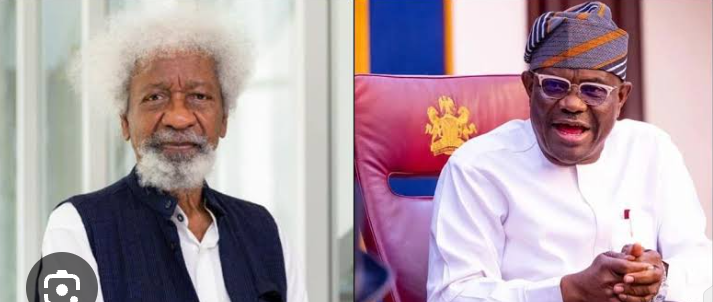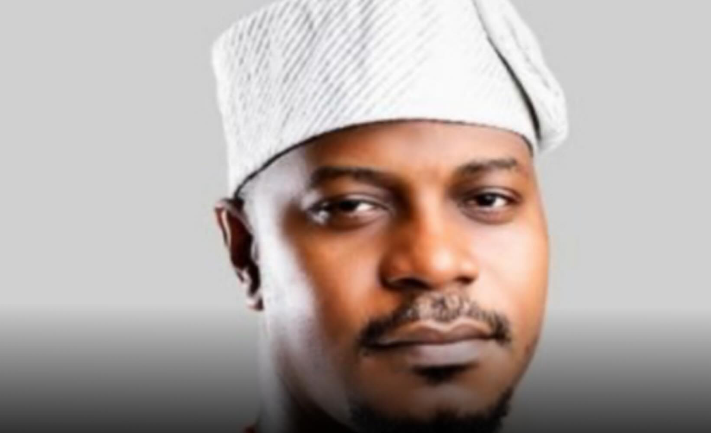
Concern, Shock and Questions Trail Viral Photo of Wole Soyinka’s Swollen Leg During Visit to Benue Governor

A single photograph has once again sent Nigerians into a spiral of concern, speculation and emotional reflection as an image of Nobel Laureate, Professor Wole Soyinka, with a visibly swollen leg during a meeting with the Governor of Benue State, Reverend Father Hyacinth Alia, made its way across social media platforms. The picture, which captures the respected literary icon seated in conversation with the governor, triggered a wave of reactions as citizens expressed fear, curiosity and deep affection for one of the nation’s most revered intellectuals.
For many Nigerians, the image was not just another viral post—it was a moment of collective pause. Soyinka, now 90, has long represented resilience, brilliance and a lifetime of unyielding courage. Seeing the elder statesman with what appeared to be a swollen leg instantly ignited discussions as people questioned the state of his health, the pressures of old age, and how well Nigeria treats its national treasures. Comment sections flooded with words like “Oh no,” “What happened to his leg?” and “God keep him for us.” Others expressed frustration at the lack of information regarding his physical wellbeing, arguing that a figure of such national importance should not leave the public guessing.
The visit itself was meant to be a symbolic and cordial engagement as Soyinka met Governor Alia in Makurdi to discuss cultural preservation, education and national unity—topics dear to both men, especially as Nigeria grapples with identity tensions and social instability. But instead of the agenda dominating the public conversation, the focus shifted almost immediately once the image circulated. In typical Nigerian social media fashion, the reactions swung from deeply serious to painfully humorous. Some users made empathetic remarks about aging gracefully, while others offered unsolicited medical diagnoses in the comments. A few attempted to lighten the mood with jokes about “our elders needing rest more than meetings,” although such comments were swiftly shut down by others who insisted that the moment demanded respect, not comedy.
Among the more emotional reactions were those who reflected on Soyinka’s journey—a man who challenged military dictators, confronted societal injustice and spent decades shaping the literary consciousness of not just Nigeria but the world. Many felt a sense of sadness seeing him physically fragile, a reminder that even the strongest cultural giants are human and vulnerable. Messages like “He has done more than enough for this country; let him rest,” and “Nigeria doesn’t deserve Soyinka’s stress at this age,” were repeated in various forms. There were also calls for the government at both state and federal levels to prioritize the well-being of aged national figures, ensuring they have access to comprehensive medical care and are not overburdened with public engagements.
Some Nigerians, however, cautioned against sensationalizing the situation. They argued that swelling in older individuals can result from benign causes such as prolonged sitting, age-related circulation issues, or minor inflammation. These voices urged the public to avoid panic and allow Soyinka and his family privacy. But in an age where images dominate narratives faster than facts can catch up, the concern continued to grow. Nigerians demanded clarity—not out of entitlement, but out of genuine affection for a man whose contributions to the nation remain immeasurable.
The Governor’s office has not issued any statement acknowledging the public concerns, nor has Soyinka’s team made any comment regarding the photo or his leg. Without official explanations, Nigerians resorted to prayers and well-wishes, with thousands posting messages of healing and strength. The hashtag #WoleSoyinka trended for hours, accompanied by phrases like “Baba must be okay” and “We can’t lose another icon.” In a country where distressing news has become frequent—from insecurity to economic hardship—people appeared emotionally unprepared to see a beloved figure looking anything less than strong.
Observers note that the public’s reaction highlights the emotional connection Nigerians share with their aging icons. The country’s heroes, especially those from the older generation, symbolize a time when integrity, intellect and national pride were stronger. Seeing them physically weakened often feels like watching a fading era—one many fear will not be replaced with equal brilliance or courage. Soyinka, in particular, represents an unfiltered voice, always ready to speak truth to power regardless of who is listening. His image carrying a swollen leg felt, to some, like the universe whispering about the passage of time.
Amid the outcry, a deeper conversation emerged online: how Nigeria preserves its history and honors its cultural leaders. Some commentators argued that Nigerians tend to celebrate their icons only when crises arise or after they pass on. They insisted that figures like Soyinka should be celebrated, supported and shielded while they are still alive. Others added that the photograph should serve as a wake-up call for the younger generation to step forward, learn from the elders, and begin shaping the nation’s intellectual and cultural future. The elders, they said, cannot—and should not—carry the weight forever.
Still, the debate continued, with some pointing out that Soyinka has never been one to shy away from public service or national dialogue. Even at his advanced age, he still attends events, grants interviews, writes essays and participates in cultural conversations. Such dedication earns admiration, but also concern, as many feel he pushes himself too hard. “He has nothing left to prove,” one person wrote. “Let him enjoy the rest of his years in peace, not under the pressure of politics and national issues.”
As more people shared the image, discussions extended far beyond the Benue meeting. It became a mirror reflecting Nigeria’s collective anxieties, its reverence for intellectual giants, and its unspoken fear of losing another foundational pillar in a turbulent era. Soyinka’s swollen leg became more than a medical observation—it became symbolic of a wounded nation looking at one of its moral voices and remembering everything he has stood for.
Whether the swelling is temporary or a sign of a more serious health issue remains unknown. What is certain, however, is that Nigerians care deeply. The outpouring of concern, even in the absence of details, showed the immense love and respect Soyinka commands across generations. And while the photo raised difficult questions, it also reminded the nation of the importance of cherishing its icons, not just in their strength, but also in their vulnerability.
Until an official statement emerges, Nigerians continue to hope that the swollen leg is nothing more than a passing discomfort. In the meantime, the moment serves as a poignant reminder that time is moving, the nation’s heroes are aging, and the responsibility of safeguarding Nigeria’s future is slowly shifting to new shoulders. For now, Nigerians watch and pray, united in concern for a man whose wisdom, courage and artistry have shaped the soul of the country for decades.


